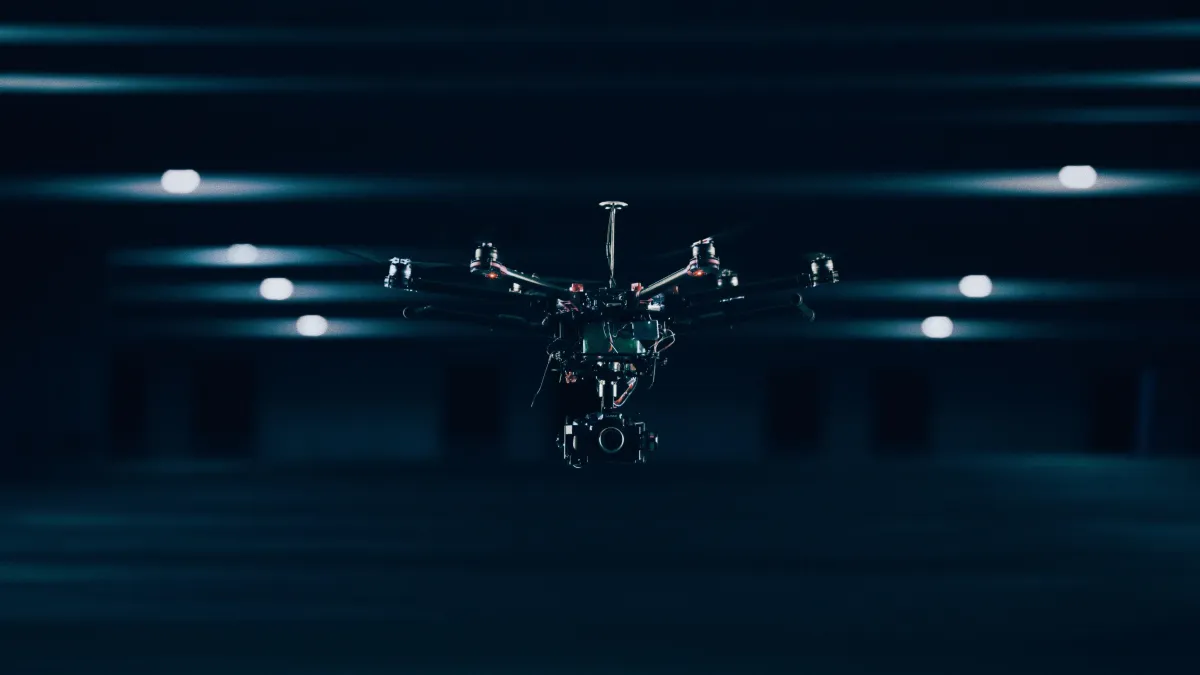
Drone Pilot Job - Part 2: Specialized Roles and Pro Tips
In the dynamic world of drone pilot jobs, specialized roles across various industries offer exciting opportunities for professionals. Welcome to "Drone Pilot Job - Specialized Roles and Pro Tips," where we explore the diverse landscapes where drone pilots play pivotal roles. Discover industry-specific insights and expert tips to enhance your skills and excel in these specialized domains. Whether it's aerial photography and videography, agriculture and environmental monitoring, search and rescue, drone delivery, or public safety, this guide serves as your gateway to mastering unique challenges and thriving in the vast expanse of drone piloting.
As you embark on your journey into the world of drone pilot jobs, make sure to check out Part 1 of our comprehensive guide. There, you'll learn about essential skills, getting started with drone piloting, certification and regulations, and how to choose the right drone for the job. Click here to access the foundational knowledge that will set you on the path to success in the exciting realm of drone piloting.
JOB OPPORTUNITIES IN AERIAL PHOTOGRAPHY AND VIDEOGRAPHY
The marriage of drones and photography has revolutionized the way we capture and perceive visuals. Aerial photography and videography, once reserved for big-budget productions, are now accessible to a broader audience, thanks to the skillful piloting of drones.
Drone pilots in aerial photography and videography can earn anywhere from $30,000 to $150,000 per year. The range depends on factors like the complexity of the projects, the pilot's expertise, and the geographic location. Freelance drone pilots may earn per project or per hour.
Drone Pilot Job: Booming Opportunities in Aerial Content Creation
1. Cinematic Aerial Shots for Films and Videos:
Drones have revolutionized cinematography by offering dynamic and breathtaking aerial shots that were once challenging and costly to capture. Filmmakers leverage drones to add a new dimension to storytelling, providing viewers with stunning perspectives and immersive experiences.
Insights: The use of drones in film production is not limited to big-budget productions; even independent filmmakers and content creators can now incorporate cinematic aerial shots to elevate the visual appeal of their projects.
2. Aerial Photography for Marketing and Advertising:
Businesses across industries are increasingly turning to aerial photography to create captivating visuals for marketing and advertising campaigns. Aerial shots offer a unique viewpoint, showcasing landscapes, properties, and products in a compelling way.
Insights: Real estate, tourism, and outdoor brands, in particular, leverage drone photography to highlight the scale and beauty of their offerings. Aerial images often become focal points in promotional materials, brochures, and digital marketing content.
3. Event Coverage and Live Streaming:
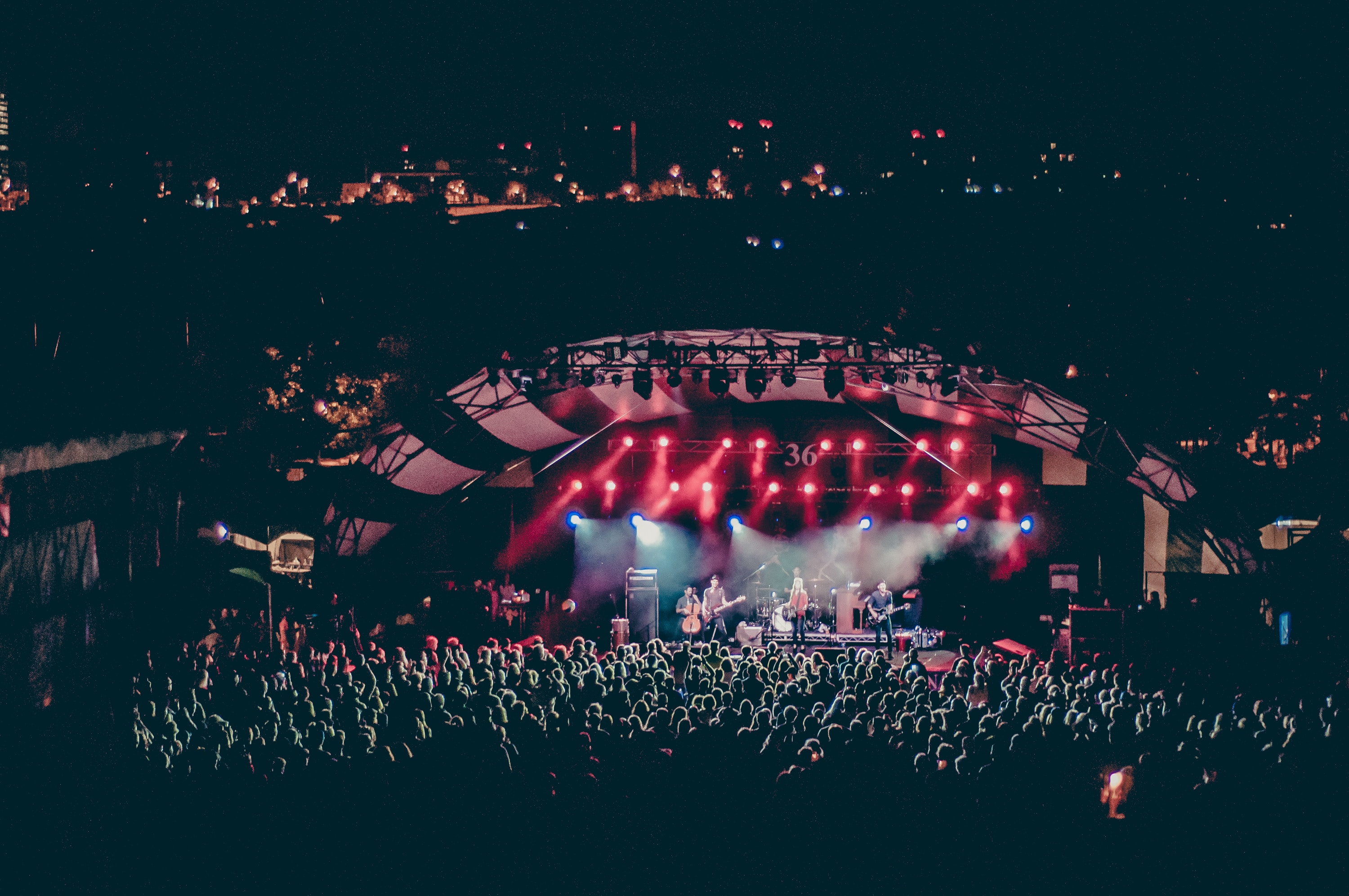
Drones are becoming integral to event coverage, providing dynamic perspectives for live streaming and recorded content. From music festivals to sports events, drone footage enhances the viewer experience by capturing expansive views and immersive angles.
Insights: Live streaming with drones has the potential to engage audiences in real time, offering a unique and dynamic viewpoint that traditional cameras may not achieve.
4. Documentary Filmmaking and Environmental Monitoring:
Documentaries often require footage from challenging or remote locations. Drones enable filmmakers to capture footage in environments that would be difficult or unsafe for traditional methods. Additionally, drones contribute to environmental monitoring by providing aerial views for research and conservation efforts.
Insights: The ability to access hard-to-reach places and document environmental changes makes drones valuable tools for documentary filmmakers and researchers alike.
Drone Pilot Job: Techniques for Creating Standout Drone-Shot Visuals
1. Dynamic Movement and Tracking Shots:
To create visually striking content, utilize the dynamic movement capabilities of drones. Incorporate tracking shots that follow subjects or explore scenic landscapes, adding a sense of fluidity and energy to the visuals.
Insights: Experiment with different flight paths, speeds, and angles to find the most compelling ways to capture movement and create a sense of cinematic flow.
2. Use of Panoramic and Overhead Views:
Drones provide a unique vantage point for capturing panoramic views and overhead shots. Utilize these perspectives to showcase vast landscapes, cityscapes, or intricate patterns from above.
Insights: Overhead shots are particularly effective for revealing the scale of a scene or creating visually stunning compositions that stand out.
3. Creative Lighting and Shadows:
Leverage the play of light and shadows to add depth and drama to your visuals. Consider the position of the sun, time of day, and how shadows interact with the landscape or subjects.
Insights: Creative lighting enhances the visual appeal of drone-shot content, creating visually compelling and memorable scenes.
4. Layering and Composition:
Implement principles of composition such as layering to create depth in your shots. Explore how different elements in the frame interact, and use foreground, midground, and background elements to enhance the overall composition.
Insights: Thoughtful composition is key to creating visually engaging and well-balanced drone-shot visuals.
5. Embrace Slow and Smooth Movements:
While drones can achieve high speeds, slow and smooth movements often result in more cinematic and polished visuals. Smooth movements allow viewers to absorb the details and appreciate the scenery.
Insights: Experiment with different speed settings and flight maneuvers to achieve the desired balance between dynamic movement and smooth cinematography.
Collaborative Relationship Between Drone Pilots and Content Creators
1. Clear Communication and Vision Sharing:
Effective collaboration starts with clear communication. Drone pilots and content creators should discuss the creative vision, specific shots needed, and any technical requirements before a project begins.
Insights: Shared understanding ensures that both parties are aligned, leading to a more efficient and successful collaboration.
2. Pre-Planning and Storyboarding:
Collaborators can enhance their workflow by engaging in pre-planning and storyboarding sessions. This involves outlining shot sequences, determining flight paths, and visualizing the overall narrative.
Insights: Planning in advance allows for a smoother execution on the day of the shoot, minimizing guesswork and optimizing the use of drone capabilities.
3. Adaptability and Flexibility:
Collaborators should be adaptable and flexible, recognizing that conditions on the day of the shoot may vary. This includes being open to adjusting plans based on weather, lighting, or unexpected challenges.
Insights: Adaptability ensures that the collaboration remains dynamic and responsive to changing circumstances, fostering a positive and productive working relationship.
4. Mutual Respect for Expertise:
Drone pilots bring technical expertise to the collaboration, while content creators contribute their creative vision. A mutual respect for each other's skills ensures a harmonious and productive working relationship.
Insights: Recognizing and valuing each other's expertise leads to a collaborative synergy that elevates the quality of the final product.
5. Post-Production Collaboration:
Collaboration extends beyond the shoot to post-production. Drone pilots and content creators should work closely during the editing process to ensure that the aerial footage seamlessly integrates with the overall visual narrative.
Insights: Post-production collaboration allows for fine-tuning, color grading, and editing that enhance the impact of the drone-shot visuals within the larger context of the project.
Conclusion
The booming opportunities in aerial content creation are vast and varied, offering exciting possibilities for filmmakers, photographers, and content creators. By understanding the techniques that make drone-shot visuals stand out and fostering a collaborative relationship between drone pilots and content creators, professionals can unlock the full creative potential of drone technology. As the drone industry continues to evolve, this collaboration promises to deliver stunning and innovative visuals that captivate audiences across various platforms and industries.
DRONE PILOT JOB IN AGRICULTURE AND ENVIRONMENTAL MONITORING
Precision agriculture has emerged as a key frontier for drone technology, with drones providing invaluable data to optimize crop yields and resource utilization. Simultaneously, drones play a crucial role in environmental monitoring, aiding scientists and conservationists in studying ecosystems from a bird's-eye view.
Salaries in agriculture and environmental monitoring can vary. Drone pilots may earn between $35,000 and $120,000 annually, depending on factors such as the size of the area they work with and the complexity of the data they collect.
Drone Pilot Job: Applications of Drones in Agriculture
1. Precision Farming:
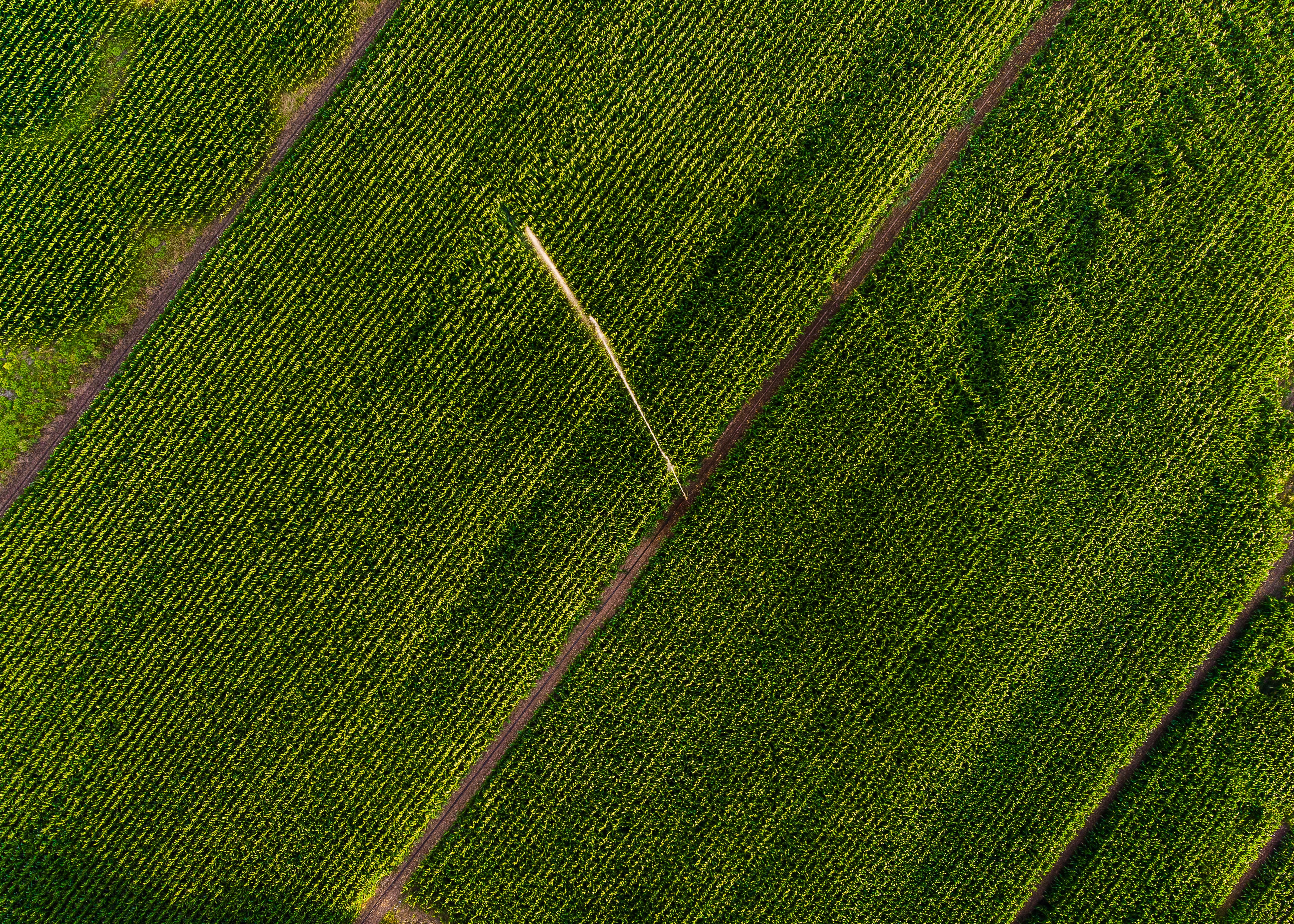
Drones equipped with advanced sensors and imaging technology are transforming agriculture through precision farming. Drone pilots play a crucial role in capturing high-resolution images of fields, providing farmers with detailed insights into crop health, soil conditions, and irrigation needs.
Role of Drone Pilots: Drone pilots navigate unmanned aerial vehicles (UAVs) over agricultural landscapes, ensuring comprehensive coverage and data collection. They contribute to the optimization of farming practices by assisting farmers in making informed decisions based on real-time data.
2. Crop Monitoring and Management:
Drones enable efficient crop monitoring by capturing multispectral and thermal imagery. This data helps assess crop health, identify areas affected by pests or diseases, and monitor the effectiveness of agricultural interventions.
Role of Drone Pilots: Pilots plan and execute precise flight paths to cover large agricultural areas systematically. They operate drones to capture images that assist agronomists and farmers in monitoring crop conditions, leading to targeted and timely interventions.
3. Aerial Seeding and Crop Spraying:
Drones equipped with seeding or spraying mechanisms contribute to aerial seeding and crop spraying. This application enables precise and efficient distribution of seeds, fertilizers, or pesticides over agricultural fields.
Role of Drone Pilots: Pilots oversee the aerial application process, ensuring accurate coverage and adherence to the recommended dosage. They collaborate with agritech specialists to implement effective and sustainable agricultural practices.
4. Yield Estimation and Planning:
Drones assist in yield estimation by analyzing plant health indicators and growth patterns. This information aids farmers in predicting crop yields and planning harvesting operations more effectively.
Role of Drone Pilots: Pilots capture data that supports the creation of detailed yield maps. They collaborate with agricultural experts to interpret data, allowing farmers to make informed decisions about resource allocation and harvest planning.
5. Soil Mapping and Analysis:
Drones equipped with soil sensors and imaging tools contribute to soil mapping and analysis. This application helps farmers understand soil composition, moisture levels, and nutrient distribution across their fields.
Role of Drone Pilots: Pilots collect high-resolution soil data by flying drones over designated areas. They work closely with soil scientists and agronomists to generate accurate soil maps, enabling farmers to implement targeted soil management practices.
Drone Pilot Job: Applications of Drones in Environmental Science
1. Ecological Monitoring:
Drones are instrumental in ecological monitoring, allowing researchers to study ecosystems, biodiversity, and environmental changes. They facilitate the collection of data from challenging or remote locations.
Role of Drone Pilots: Pilots navigate drones through diverse environments, capturing imagery and data for ecological studies. They work in collaboration with environmental scientists to monitor habitats, track wildlife, and assess ecosystem health.
2. Forest Management and Conservation:
Drones contribute to forest management and conservation efforts by providing aerial views of forested areas. This includes monitoring tree health, assessing deforestation risks, and identifying areas prone to wildfires.
Role of Drone Pilots: Pilots operate drones to conduct forest surveys, enabling conservationists and forestry experts to make informed decisions about resource management, conservation strategies, and wildfire prevention.
3. Water Quality Assessment:
Drones equipped with water sensors are used to assess water quality in lakes, rivers, and other water bodies. They collect data on parameters such as temperature, turbidity, and nutrient levels.
Role of Drone Pilots: Pilots navigate drones over water bodies, collecting samples and data for water quality analysis. They collaborate with environmental researchers to monitor and address water pollution, contributing to the sustainable management of aquatic ecosystems.
4. Environmental Monitoring in Disaster Response:
Drones play a vital role in disaster response and environmental monitoring during events such as hurricanes, floods, or wildfires. They provide real-time visuals of affected areas, aiding emergency responders and decision-makers.
Role of Drone Pilots: Pilots operate drones to capture timely and accurate imagery in disaster-stricken areas. They collaborate with emergency response teams, helping assess the extent of damage, plan rescue missions, and support recovery efforts.
5. Wildlife Conservation and Monitoring:
Drones are employed in wildlife conservation to monitor and track animal populations, assess habitats, and combat poaching. They provide a non-intrusive means of observing wildlife without disrupting their natural behaviors.
Role of Drone Pilots: Pilots navigate drones to survey wildlife habitats, track migration patterns, and monitor endangered species. They work alongside conservationists and wildlife biologists to gather critical data for the protection and preservation of biodiversity.
Conclusion
Drone pilots are at the forefront of transformative applications in agriculture and environmental science. Their role extends beyond flying drones; they contribute to the collection of crucial data that informs sustainable practices, enhances resource management, and addresses environmental challenges. As the demand for these applications continues to grow, drone pilots play a pivotal and dynamic role in shaping the future of these critical fields.
SEARCH AND RESCUE OPERATIONS: A NOBLE DRONE PILOT CAREER
Drones have proven to be invaluable tools in search and rescue missions, dramatically reducing response times and improving the chances of locating missing persons. As a drone pilot engaged in search and rescue operations, individuals contribute to the greater good, showcasing the humanitarian aspects of drone technology.
Drone pilots involved in search and rescue operations may work for government agencies, nonprofits, or private companies. Salaries can range from $45,000 to $160,000, and experienced pilots with specialized skills may earn higher salaries. Some roles in this sector may be part of larger emergency response teams.
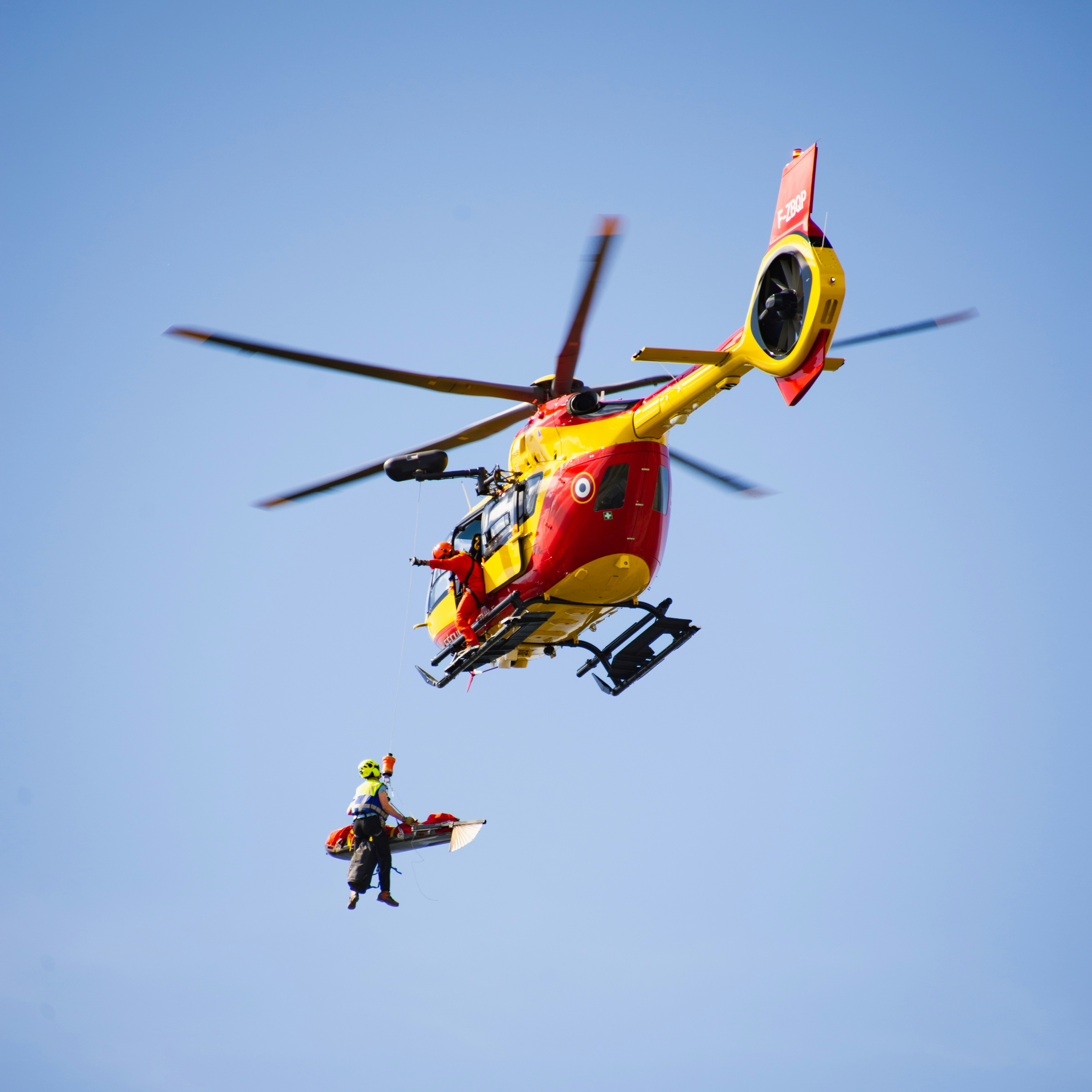
The Honorable Role of Drone Pilots in Search and Rescue Missions
1. Rapid Deployment in Critical Situations:
Drone pilots are often the first responders in critical situations, deploying rapidly to assess and gather information in areas that may be difficult for traditional search and rescue teams to reach promptly. Drones provide a quick and effective means of surveying disaster-stricken or hard-to-reach locations.
Role of Drone Pilots: Pilots play a vital role in the swift deployment of drones. Their ability to navigate unmanned aerial vehicles (UAVs) allows for immediate aerial reconnaissance, aiding in the assessment of the situation and guiding subsequent rescue efforts.
2. Real-Time Situational Awareness:
Drones equipped with cameras and sensors offer real-time situational awareness, providing live feeds to rescue teams. This information is invaluable in assessing the scale of emergencies, identifying survivors, and strategizing rescue operations.
Role of Drone Pilots: Pilots maintain constant communication with ground teams, delivering critical visual data in real-time. This collaborative effort enhances the effectiveness of search and rescue missions, ensuring timely and informed decision-making.
3. Reaching Inaccessible Areas:
Drones are capable of reaching areas that may be inaccessible or unsafe for human responders. This includes surveying disaster-stricken zones, exploring collapsed structures, or navigating treacherous terrains.
Role of Drone Pilots: Pilots skillfully navigate drones through challenging environments, capturing high-resolution imagery of areas that may be difficult for traditional search teams to access. This aerial perspective aids in the identification of hazards and potential survivor locations.
4. Night Vision and Thermal Imaging:
Many search and rescue missions occur under challenging conditions, including low light or darkness. Drones equipped with night vision and thermal imaging capabilities enhance visibility and assist in locating individuals who may be stranded or injured.
Role of Drone Pilots: Pilots utilize advanced drone technologies to conduct night operations. By employing thermal imaging, they can detect heat signatures, helping identify survivors in low-visibility conditions and optimizing rescue efforts.
5. Communication and Coordination:
Drones act as communication hubs, providing a means for coordinating efforts between ground teams, command centers, and other response units. They facilitate seamless communication in dynamic and evolving search and rescue scenarios.
Role of Drone Pilots: Pilots act as liaisons between various response teams, relaying critical information and coordinating the positioning of drones for optimal coverage. This collaborative approach ensures effective communication throughout the mission.
6. Aiding in Natural Disaster Response:
Drones play a crucial role in responding to natural disasters such as hurricanes, earthquakes, and floods. They help assess the extent of damage, locate survivors, and plan evacuation routes, contributing to efficient disaster response efforts.
Role of Drone Pilots: Pilots contribute to the assessment of disaster-stricken areas, capturing comprehensive data that aids in resource allocation, emergency response planning, and the prioritization of rescue operations.
Drone Pilot Job: The Intersection of Technology and Human Compassion
The noble endeavors of drone pilots engaged in search and rescue missions showcase the intersection of technology and human compassion. The deployment of drones in these critical situations reflects a commitment to leveraging advanced tools to save lives and alleviate human suffering. The human touch is evident in the compassion and dedication of drone pilots who tirelessly navigate challenges to make a positive impact on communities in distress.
Exploring the Prospects of Search and Rescue Using Drone Technology
As technology continues to advance, the role of drone pilots in search and rescue missions will likely expand. Innovations such as artificial intelligence, machine learning, and improved sensor technologies will further enhance the capabilities of drones, making them even more effective tools in emergency response. The partnership between technology and human compassion, exemplified by drone pilots, represents a beacon of hope for communities facing adversity.
DRONE DELIVERY: THE FUTURE OF LOGISTIC
The concept of drone delivery has transitioned from futuristic speculation to a tangible reality. Companies are actively exploring the use of drones for last-mile delivery, revolutionizing the logistics industry. Drone pilots in this sector oversee the safe and efficient delivery of packages, marking a paradigm shift in how goods reach their destinations.
Drone delivery is a rapidly evolving sector with salaries for pilots ranging from $40,000 to $140,000, depending on factors such as experience, expertise, and the size of the employing company. Experienced pilots with specialized skills in optimizing delivery routes and navigating regulatory complexities often command higher salaries in this dynamic field.
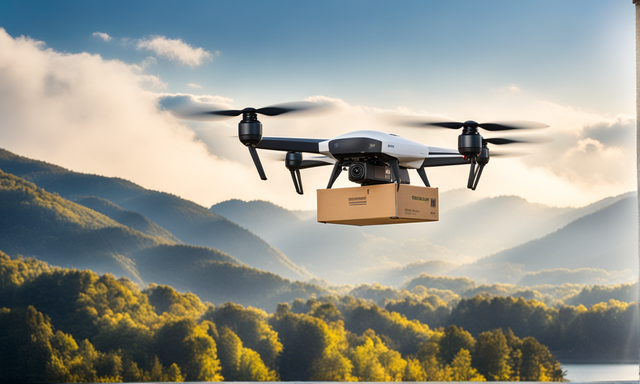
Drone Pilot Job: The Evolving Landscape of Drone Delivery
1. Opportunities for Efficiency and Speed:
Drone delivery presents a significant opportunity for enhancing the efficiency and speed of logistics operations. Drones can navigate directly to specific addresses, bypassing traditional road infrastructure and overcoming traffic congestion.
Role of Drone Pilots: Drone pilots are crucial in the operation and navigation of delivery drones. They ensure the safe and timely transport of packages, optimizing routes and adhering to regulatory guidelines for unmanned aerial vehicles (UAVs).
2. Last-Mile Delivery Revolution:
Drone delivery is particularly transformative for last-mile logistics, addressing the final leg of the delivery journey. Drones can reach remote or hard-to-access locations, reducing the reliance on traditional ground transportation for the last-mile segment.
Role of Drone Pilots: Pilots play a key role in planning and executing last-mile drone deliveries. They coordinate with logistics hubs, monitor weather conditions, and ensure precise navigation to deliver packages directly to customers' doorsteps.
3. Challenges in Urban Environments:
Urban environments present unique challenges for drone delivery, including densely populated areas, tall buildings, and complex airspace. Ensuring safe and reliable operations in such environments requires careful planning and coordination.
Role of Drone Pilots: Pilots are tasked with navigating drones through urban landscapes, avoiding obstacles, and adhering to regulations that govern urban airspace. Their expertise is essential in addressing the intricacies of delivering packages in densely populated cities.
4. Regulatory Compliance and Safety:
Drone delivery is subject to strict regulatory frameworks to ensure safety and compliance with aviation standards. Adhering to these regulations is paramount for securing approvals and building public trust in drone delivery services.
Role of Drone Pilots: Pilots are responsible for ensuring that drone operations comply with regulatory requirements. They stay informed about airspace regulations, obtain necessary certifications, and work with aviation authorities to integrate drone delivery into existing air traffic management systems.
5. Weather-Related Challenges:
Adverse weather conditions, such as high winds, rain, or snow, can impact the safety and reliability of drone deliveries. Pilots must consider weather forecasts and make real-time decisions to ensure safe operations.
Role of Drone Pilots: Pilots assess weather conditions before and during flights, making informed decisions about whether it's safe to proceed with deliveries. Their ability to navigate challenging weather scenarios is crucial for maintaining the reliability of drone delivery services.
Drone Pilot Job: The Potential Implications for the Future of Logistics
1. Expanded Reach and Accessibility:
Drone delivery has the potential to expand the reach and accessibility of logistics services, especially in remote or underserved areas. Drones can overcome geographical barriers, providing timely deliveries to regions that may be challenging for traditional transportation modes to reach.
Role of Drone Pilots: Pilots contribute to extending the reach of logistics services by navigating drones to remote destinations. Their skills are essential for overcoming geographical challenges and ensuring reliable deliveries in diverse locations.
2. Reduced Environmental Impact:
Drones are generally more environmentally friendly than traditional delivery vehicles, contributing to a reduction in carbon emissions. Electric-powered drones and the avoidance of road congestion can contribute to a greener and more sustainable logistics ecosystem.
Role of Drone Pilots: Pilots play a role in promoting environmentally sustainable practices by utilizing electric-powered drones and optimizing routes for efficiency. Their decisions impact the overall environmental footprint of drone delivery operations.
3. Integration with Autonomous Technologies:
The future of drone delivery may involve increased integration with autonomous technologies, including artificial intelligence and machine learning. Autonomous drones may perform certain tasks independently, with human pilots overseeing and managing more complex aspects.
Role of Drone Pilots: Pilots may transition to more supervisory roles, overseeing fleets of autonomous drones, ensuring safety protocols, and intervening in situations that require human decision-making. Their expertise remains critical in managing the evolving landscape of autonomous logistics.
4. Enhanced Customer Experience:
Drone delivery promises to enhance the customer experience by providing faster and more convenient delivery options. Customers may benefit from shorter delivery times, reduced costs, and increased flexibility in receiving packages.
Role of Drone Pilots: Pilots contribute to a positive customer experience by ensuring the efficiency and reliability of drone deliveries. Their role in optimizing routes and maintaining delivery schedules directly impacts customer satisfaction.
5. Job Opportunities and Skill Development:
The growth of drone delivery creates job opportunities for skilled drone pilots. As the industry expands, there will be a demand for professionals who can navigate, manage, and maintain delivery drones.
Role of Drone Pilots: Pilots have the opportunity to contribute to the growth of the drone delivery sector by continuously developing their skills. As the technology evolves, the demand for skilled pilots is likely to increase, opening up new career paths in the logistics industry.
Conclusion
The evolving landscape of drone delivery presents a dynamic interplay of challenges and opportunities for drone pilots. From navigating urban environments to ensuring regulatory compliance and contributing to the future of autonomous logistics, pilots play a pivotal role in shaping the future of the logistics industry. As technology advances and societal acceptance grows, the potential implications include expanded reach, reduced environmental impact, and enhanced customer experiences, ultimately transforming the way goods are transported and delivered in the years to come.
SECURITY AND SURVEILLANCE: A CRUCIAL ROLE FOR DRONE PILOTS
In an era where security is paramount, drones have become indispensable tools for enhancing surveillance measures. Trained drone pilots play a crucial role in deploying drones for security purposes, monitoring large areas, and improving situational awareness.
Drone pilots in public safety, including roles in law enforcement, firefighting, and disaster response, may earn salaries ranging from $55,000 to $175,000 or more. These roles often require specialized training, and salaries can vary based on the level of expertise and the size and location of the employing agency.

Drone Pilot Job: Applications of Drones in Security and Surveillance
1. Perimeter Monitoring and Intrusion Detection:
Drones play a crucial role in monitoring the perimeters of sensitive areas such as airports, military installations, and critical infrastructure. Equipped with high-resolution cameras and sensors, drones can quickly detect and respond to potential intrusions.
Responsibilities of Drone Pilots: Pilots are responsible for executing systematic patrols along perimeters, actively monitoring live feeds, and responding to any signs of unauthorized access. Their vigilance is vital in ensuring the security of protected areas.
2. Event Security and Crowd Monitoring:
Drones are employed to enhance security during events, public gatherings, and large gatherings. They provide aerial views for crowd monitoring, situational awareness, and the identification of potential security threats.
Responsibilities of Drone Pilots: Pilots play a key role in managing the airspace above events, monitoring crowds for safety and security, and collaborating with ground security teams to respond to any emerging risks or incidents.
3. Search and Rescue Operations:
Drones are utilized in search and rescue missions to locate missing persons, survey disaster-stricken areas, and assist emergency responders. Thermal imaging and other sensors enhance the effectiveness of these operations.
Responsibilities of Drone Pilots: Pilots are responsible for navigating drones in challenging conditions, capturing critical visuals to aid in search and rescue efforts. Their ability to operate drones effectively contributes to the success of life-saving missions.
4. Critical Infrastructure Inspection:
Drones are employed to inspect critical infrastructure such as power plants, bridges, and communication towers. They provide detailed aerial views for routine inspections, identifying potential vulnerabilities or maintenance issues.
Responsibilities of Drone Pilots: Pilots conduct thorough inspections by navigating drones around infrastructure, capturing high-resolution images, and identifying any anomalies. Their attention to detail is crucial in maintaining the security and integrity of critical facilities.
5. Surveillance in Law Enforcement:
Law enforcement agencies use drones for surveillance in various scenarios, including tracking suspects, monitoring crime scenes, and providing aerial support during operations. Drones offer an elevated perspective for effective policing.
Responsibilities of Drone Pilots: Pilots collaborate closely with law enforcement teams, providing real-time aerial surveillance and aiding in the collection of evidence. Their ability to operate drones discreetly and effectively contributes to investigative efforts.
6. Border Security and Patrols:
Drones play a vital role in border security by conducting patrols and surveillance along national borders. They enhance border control efforts by monitoring activities in remote or challenging terrains.
Responsibilities of Drone Pilots: Pilots are tasked with flying drones along border regions, conducting surveillance, and identifying any suspicious activities. Their skill in navigating drones in diverse landscapes contributes to border security measures.
Drone Pilot Job: Responsibilities and Skills Required for Drone Pilots in Security and Surveillance
1. Adherence to Regulations:
Drone pilots in security and surveillance must adhere to strict aviation regulations and legal requirements. Compliance ensures safe and lawful drone operations.
Skills: Understanding and keeping up-to-date with aviation regulations, obtaining necessary certifications, and ensuring compliance during every mission.
2. Effective Communication:
Clear and effective communication is vital for coordinating with security teams and responding to emerging situations in real time.
Skills: Pilots should possess strong communication skills, being able to relay information accurately and collaborate seamlessly with ground teams.
3. Navigation in Challenging Environments:
Navigating drones in complex environments, including urban landscapes or remote areas, requires precision and adaptability.
Skills: Pilots need excellent spatial awareness, the ability to navigate drones through obstacles, and proficiency in adjusting to varying conditions.
4. Attention to Detail:
Security and surveillance missions demand a keen eye for detail to identify potential threats or anomalies.
Skills: Pilots should demonstrate meticulous attention to detail, interpret visual data accurately, and recognize potential security risks.
5. Crisis Management:
In emergency situations, drone pilots must be able to respond quickly and effectively, contributing to crisis management efforts.
Skills: Pilots should undergo crisis response training, enabling them to make swift and informed decisions during high-pressure situations.
6. Privacy Awareness:
Ensuring privacy compliance is crucial, especially when conducting surveillance in public spaces.
Skills: Pilots need to be aware of privacy considerations, understand the legal and ethical implications of their activities, and take measures to protect individuals' privacy.
7. Technological Proficiency:
Operating advanced drone technologies and surveillance equipment requires technical proficiency.
Skills: Pilots should be adept at operating drones, understanding the capabilities of various sensors, and staying informed about technological advancements in the field.
Conclusion
Drones have become indispensable tools in security and surveillance, offering enhanced capabilities for monitoring and responding to a wide range of situations. The responsibilities of drone pilots in this critical field extend beyond flying drones; they include regulatory compliance, effective communication, crisis management, and a commitment to privacy. The skills required for success in security and surveillance underscore the importance of well-trained and responsible drone pilots in safeguarding communities and critical assets. As technology continues to advance, the role of drone pilots in security and surveillance will likely become even more central to ensuring public safety and national security.
DRONE PILOT JOB - FREELANCE OPPORTUNITIES
The gig economy has extended its reach into the drone industry, opening up freelance opportunities for skilled pilots. Online platforms connect freelance drone pilots with clients seeking their services, creating a marketplace where pilots can showcase their skills and bid on projects.

Drone Pilot Job: Navigating Online Platforms for Freelance Drone Pilots
1. Identify Reputable Freelance Platforms:
Recommendation: Start by identifying reputable freelance platforms that cater specifically to the drone industry. Platforms like Upwork, Freelancer, and Zeitview are popular choices for connecting drone pilots with clients seeking aerial services.
2. Create a Comprehensive Profile:
Action: Build a compelling profile that showcases your skills, certifications, and experience as a drone pilot. Include a professional bio, highlight your areas of expertise, and upload a portfolio of your best work to make a strong first impression.
3. Specify Your Services and Niche:
Advice: Clearly define the services you offer and your niche within the drone industry. Whether it's aerial photography, videography, surveying, or inspections, being specific helps potential clients understand your expertise.
4. Set Competitive Rates:
Tip: Research market rates for drone services in your region and set competitive yet realistic pricing for your services. Explore the option of providing bundled packages or extended project discounts to entice potential clients.
5. Utilize Platform Features:
Recommendation: Leverage the features provided by freelance platforms, such as job alerts, bidding on projects, and participating in relevant forums. Actively engage with potential clients and other freelancers to expand your network.
Drone Pilot Job: Building a Strong Online Presence
1. Create a Professional Website:
Action: Establish a professional website that serves as your online portfolio. Include details about your services, showcase your work, and provide contact information. A thoughtfully crafted website enhances the credibility of your freelance enterprise.
2. Optimize Your Social Media Profiles:
Advice: Optimize your social media profiles, especially on platforms like LinkedIn and Instagram, to reflect your expertise as a drone pilot. Share your work, engage with industry-related content, and connect with professionals in the field.
3. Start a Blog or Vlog:
Tip: Consider starting a blog or vlog that highlights your experiences, offers insights into drone technology, and showcases your projects. This not only establishes you as an authority in the field but also improves your website's SEO.
4. Collect and Showcase Testimonials:
Recommendation: Request testimonials from satisfied clients and showcase them on your website and freelance profiles. Favorable reviews foster trust and credibility, influencing potential clients to opt for your services.
5. Engage in Online Communities:
Action: Join online communities related to drones, aerial photography, or freelance services. Actively participate in discussions, share your knowledge, and network with potential clients and collaborators.
Drone Pilot Job: Establishing a Successful Freelancing Career
1. Continuously Improve Your Skills:
Tip: Stay updated on the latest developments in drone technology, regulations, and industry trends. Consider investing in additional certifications or training programs to enhance your skill set and stay competitive.
2. Network with Industry Professionals:
Advice: Attend industry events, webinars, and networking sessions to connect with fellow drone pilots, potential clients, and industry professionals. Networking unlocks avenues for fresh opportunities and collaborative ventures.
3. Diversify Your Services:
Recommendation: Consider diversifying your services to cater to a broader range of clients. This could include offering specialized services such as 3D mapping, thermal imaging, or specific industry-focused solutions.
4. Prompt and Professional Communication:
Action: Respond to client inquiries promptly and maintain professional communication throughout the project. Clear and timely communication builds trust and fosters positive client relationships.
5. Seek Repeat Business and Referrals:
Tip: After successfully completing projects, reach out to clients for feedback and inquire about the potential for repeat business or referrals. Satisfied clients can be valuable advocates for your freelance services.
6. Manage Finances Efficiently:
Recommendation: Implement efficient financial management practices. Keep track of income, expenses, and taxes. Ponder on the idea of adopting accounting software to streamline financial procedures.
Conclusion
Navigating online platforms, building a strong online presence, and establishing a successful freelancing career in the drone industry require a combination of technical skills, business acumen, and effective networking. By strategically leveraging online platforms, showcasing your skills through a professional online presence, and continually improving and diversifying your services, you can create a flourishing freelance career in the dynamic and rapidly evolving field of drone technology. Stay proactive, engaged, and adaptable to seize the multitude of opportunities that the drone industry offers to passionate and skilled professionals.
CHALLENGES IN THE DRONE PILOT INDUSTRY
While the allure of drone pilot jobs is undeniable, the industry comes with its set of challenges. From regulatory complexities to technical issues and client expectations, navigating these challenges requires resilience and adaptability.
Drone Pilot Job: Common Obstacles Faced by Drone Pilots
1. Stringent Regulatory Compliance:
Adhering to ever-changing and stringent regulations in the drone industry can be challenging for pilots, with varying rules in different regions and frequent updates.
Strategy: Stay informed about local and international regulations, regularly check for updates, and ensure all necessary certifications are up-to-date. Joining industry associations can provide valuable resources for staying compliant.
2. Weather-Related Challenges:
Adverse weather conditions, such as high winds, rain, or low visibility, can impede drone operations and affect the safety of flights.
Strategy: Monitor weather forecasts diligently before each flight, and prioritize safety. Establish clear operating guidelines based on weather conditions, and be prepared to reschedule or delay flights when necessary.
3. Equipment Reliability and Maintenance:
Drone equipment, like any technology, is prone to malfunctions. Regular maintenance and unexpected technical issues can disrupt operations.
Strategy: Implement a thorough pre-flight checklist, conduct routine maintenance, and invest in quality equipment. Have backup systems in place and stay informed about firmware updates and technological advancements.
4. Privacy Concerns and Public Perception:
Public concerns about privacy and the perception of drones as intrusive may present challenges for pilots, especially in urban or populated areas.
Strategy: Educate the public about the responsible use of drones and privacy measures. Communicate openly about your adherence to regulations, respect for privacy, and the benefits of drone technology.
5. Competition in the Freelance Market:
The growing popularity of drone technology has led to increased competition in the freelance market, making it challenging for pilots to stand out.
Strategy: Differentiate yourself by specializing in a niche, showcasing a strong portfolio, and actively seeking positive client reviews. Network with industry professionals and stay updated on the latest trends and technologies.
6. Technical Skill Requirements:
Mastering the technical aspects of drone operation, including flight control, camera settings, and post-processing, can be a steep learning curve.
Strategy: Invest time in comprehensive training programs, workshops, and certifications. Practice regularly and stay engaged with industry forums to learn from experienced pilots. Embrace a continuous learning mindset.
Drone Pilot Job: Strategies for Overcoming Obstacles
1. Continuous Education and Training:
Strategy: Stay proactive in advancing your knowledge and skills. Participate in continuous education programs, attend workshops, and obtain certifications relevant to your specialization.
2. Effective Communication:
Strategy: Enhance communication skills to address public concerns and build trust. Clearly communicate your adherence to regulations, safety measures, and the benefits your drone services bring to various industries.
3. Networking and Collaboration:
Strategy: Build a strong professional network within the drone community. Collaborate with other pilots, industry experts, and potential clients. Networking can open up opportunities, provide support, and foster growth.
4. Investing in Quality Equipment:
Strategy: Prioritize investing in reliable and high-quality drone equipment. Regularly update firmware, perform routine maintenance, and have backup systems in place to mitigate technical issues.
5. Diversifying Service Offerings:
Strategy: Explore diverse applications of drone technology to expand your service offerings. Specialize in areas like aerial mapping, inspections, or agriculture, allowing you to cater to a broader client base.
6. Adapting to Industry Changes:
Strategy: Stay adaptable to the dynamic nature of the drone industry. Embrace technological advancements, regulatory changes, and industry trends. Being flexible and quick to adapt positions you for long-term success.
7. Building a Strong Online Presence:
Strategy: Establish a robust online presence through a professional website, active participation in social media, and showcasing your work. A strong online presence enhances credibility and attracts potential clients.
Conclusion
Overcoming obstacles in the drone industry requires a combination of resilience, continuous learning, effective communication, and strategic planning. By staying informed, investing in skills and equipment, and actively addressing challenges, drone pilots can navigate the dynamic landscape of this evolving field. Embracing a proactive and adaptable mindset is key to ensuring a smooth and successful journey in the exciting world of drone technology.
DRONE PILOT JOB: FUTURE TRENDS
The drone industry is dynamic, with continuous advancements on the horizon. Emerging technologies like artificial intelligence and automation are expected to redefine the role of drone pilots, presenting exciting opportunities for those entering the field.
Drone Pilot Job: Emerging Trends Shaping the Future
1. Integration of Artificial Intelligence (AI):
AI is revolutionizing the capabilities of drones, enabling them to process and analyze vast amounts of data in real-time. Machine learning algorithms enhance autonomous decision-making, allowing drones to navigate complex environments and perform tasks with increased efficiency.
Empowerment for Drone Pilots: Aspiring drone pilots can benefit by familiarizing themselves with AI applications in drone technology. Understanding how AI complements human skills will be crucial in the evolving landscape of autonomous drones.
2. Advanced Sensor Technologies:
The integration of advanced sensors, such as LiDAR, multispectral cameras, and hyperspectral imaging, is enhancing the capabilities of drones for various industries. These sensors enable more precise data collection, expanding the range of applications from agriculture to infrastructure inspections.
Empowerment for Drone Pilots: Pilots can stay ahead by gaining expertise in operating drones equipped with advanced sensors. Specializing in sensor-specific applications can open up niche opportunities in industries seeking high-precision data.
3. Rise of Automation and Autonomous Drones:
Automation is playing a significant role in the drone industry, with the rise of autonomous drones that can perform predefined tasks without continuous human intervention. This trend is particularly prominent in sectors like agriculture, where drones autonomously monitor and manage crops.
Empowerment for Drone Pilots: Pilots should embrace the collaborative role of humans and autonomous drones. Developing skills in programming and understanding the capabilities of autonomous systems will be valuable in managing and overseeing automated operations.
4. Drone Swarming Technology:
The concept of drone swarms involves multiple drones operating collaboratively to accomplish tasks. This technology is gaining traction in applications such as surveillance, environmental monitoring, and even entertainment events.
Empowerment for Drone Pilots: Learning about drone swarming technology and its applications can provide pilots with a unique skill set. Understanding how to coordinate and manage drone swarms opens up possibilities for larger-scale projects and applications.
5. Blockchain for Drone Data Security:
As the volume of drone-collected data increases, ensuring data security and integrity becomes paramount. Blockchain technology is being explored to enhance the security of drone data, providing a tamper-proof and transparent record.
Empowerment for Drone Pilots: Familiarity with blockchain applications in drone data security can be an asset. As data privacy concerns grow, pilots with expertise in secure data handling will be in demand.
6. Expanded Use in Public Safety:
Drones are increasingly becoming integral to public safety operations, including search and rescue, firefighting, and disaster response. The ability of drones to access difficult-to-reach areas and provide real-time information is transforming emergency response.
Empowerment for Drone Pilots: Pilots interested in public safety applications should undergo specific training in coordination with emergency services. Building expertise in using drones for search and rescue missions or disaster assessment can be a valuable specialization.
7. Environmental Monitoring and Conservation:
Drones are being employed for environmental monitoring, wildlife conservation, and anti-poaching efforts. The ability to survey large areas quickly and non-invasively is making drones indispensable in protecting ecosystems and biodiversity.
Empowerment for Drone Pilots: Aspiring pilots interested in environmental applications can focus on acquiring knowledge in ecological monitoring. Understanding the needs of environmental organizations and regulators will position pilots for roles in conservation efforts.
Drone Pilot Job: Positioning for Success in the Future Job Market
To position themselves for success in the evolving landscape of drone pilot jobs, aspiring pilots should consider the following strategies:
1. Continuous Learning and Skill Development:
Strategy: Embrace a mindset of continuous learning. Stay updated on advancements in drone technology, AI applications, and industry trends. Participate in training programs and workshops to acquire new skills.
2. Specialization in Niche Applications:
Strategy: Explore niche applications within the drone industry. Whether it's precision agriculture, environmental monitoring, or specific industry-focused solutions, specialization can make pilots more sought after in targeted markets.
3. Understanding Regulatory Frameworks:
Strategy: Stay well-informed about evolving regulations in the drone industry. Understanding the legal landscape is crucial for compliance and building trust with clients.
4. Networking and Collaboration:
Strategy: Actively participate in industry events, online forums, and networking sessions. Collaborate with professionals from various sectors to broaden your perspective and discover new opportunities.
5. Building a Strong Online Presence:
Strategy: Establish a robust online presence through a professional website and active engagement on social media. Showcase your expertise, share insights, and connect with potential clients and collaborators.
6. Adapting to Technological Changes:
Strategy: Be adaptable to technological changes, especially in the areas of AI, automation, and sensor technologies. Embrace the integration of these technologies into drone operations and seek opportunities to enhance your skills accordingly.
7. Environmental and Social Awareness:
Strategy: Develop an understanding of the environmental and social implications of drone technology. Pilots with a keen awareness of ethical considerations and environmental impact will be well-positioned in a conscientious job market.
By staying informed, embracing technological advancements, and strategically positioning themselves in emerging niches, aspiring drone pilots can not only navigate the evolving landscape but also contribute to shaping the future of the drone industry. The key lies in being proactive, adaptable, and committed to continuous growth in this dynamic field.
______________________________________________________________________________________________________________________________________
For Part 1 of our comprehensive guide on drone pilot jobs, click here to delve into essential skills, get started with drone piloting, certification, and regulations, and discover valuable insights on choosing the right drone for the job. Whether you're a novice or an experienced pilot, this foundational knowledge will set the stage for your success in the world of drone piloting.
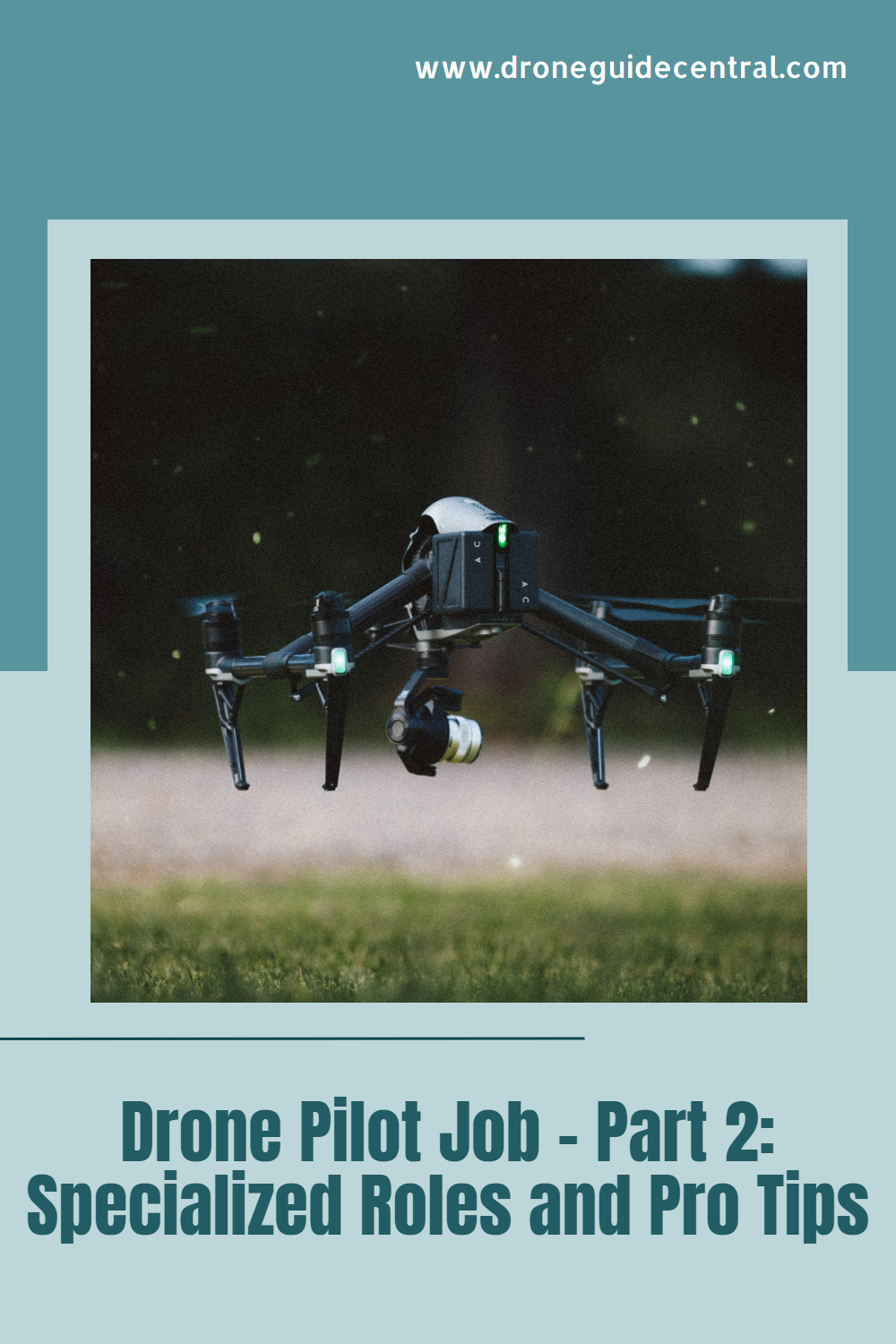
Copyright © Drone Guide Central - All Rights Reserved 2024

